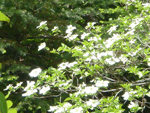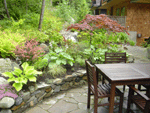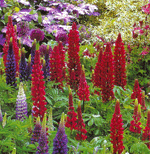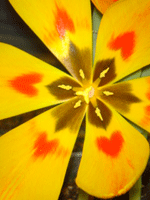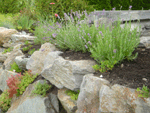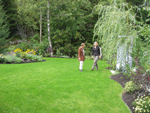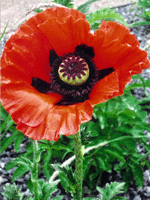
Lawn thatch is a layer of dead organic tissue that deprives the lawn from much needed water, oxygen and nutrients. It consists of slowly decomposing grass, dead roots and other debris that gets picked up by your mower and tossed back onto the grass. Thatch can accumulate (though less rapidly) even if you sweep or use a mulching mower.
A light layer of thatch (one quarter to one half inches deep) is actually beneficial to your lawn. It protects the soil from changing temperatures and adds resilience to the lawn. However, since thatch keeps the ground temperature from changing a lot, insects and diseases thrive in thatch-covered lawns. Thatch creates a warm, moist environment that cannot be easily penetrated by pest-control substances. Another problem with thatch filled lawns is that the mower will not be able to mow evenly. This will cause other problems such as scalping.
Dethatching is the process of removing the thatch. To determine if you lawn needs dethatching; first talk a walk across it. If the grass feels “spongy” underfoot, thatch may be a problem. Take a knife, trowel or shovel and remove a piece of turf. The sample must be large enough to see the grass, thatch, roots and soil. Measure the thatch. If it is deeper than one half inch, dethatching is needed. Otherwise, aeration is the most effective treatment (article coming soon). Prepare the lawn for dethatching by mowing at the lowest recommended height for your grass type.
Dethatching is best done by a professional as it requires specialist equipment and can be very damaging to your lawn if done incorrectly. The most effective way to dethatch is with a vertical mower. These resemble a heavy-duty power mower, except that they have a series of revolving vertical knives instead of blades. These knives cut and pull through the thatch to bring it to the surface of the lawn. To dethatch effectively, you must adjust the depth and spacing for the vertical blades for the type of grass in your yard. A lawn care professional can give you these settings. In general, the blades should completely penetrate the top half of the thatch layer. You should move the vertical mower across the lawn in parallel rows to begin, and then mow the entire area again in a crosswise direction. If your thatch is one inch or thicker, a third mowing at a 45 degree angle will be necessary to fully penetrate the thatch. Once you have brought the thatch to the surface, sweep or rake the lawn to remove the thatch.
Dethatching is best done in spring when growth commences. If done too late when the grass is fully green and actively growing it will put undue stress on the lawn. Dethatching is a severe process and lawns take time to recover. If dethatching is carried out just before the active growth period, this recovery time will be greatly reduced.
